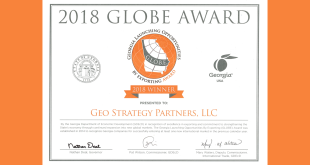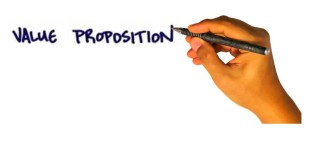IA-Forum: Your session at the upcoming Association for Strategic Planners Annual Conference will focus on how strategic positioning and competitive/go-to-market strategy work together to allow organizations to compete more effectively. How does this place organizations in a position to compete in a fast paced, quickly changing environment?
Mark Towery: I think now is the time where strategy is emerging as a clear discipline. The faster paced and more dynamic and the more competitive the markets are the more important the strategy is. This is a little contrary to some conventional wisdom which I believe has evolved as companies have moved from more static competitive environments where strategy was really planning to where markets and competition became very fast paced and dynamic. They found their planning wasn’t keeping up and abandoned strategy began to proceed in a very reactive mode.
I like to talk about strategic positioning rather than strategic planning and if you have your positioning correct, it allows you to make decisions with a lot greater efficiency and effectiveness. Good strategy is really a form of abbreviated decision making. It allows you to address opportunities that come along faster and threats that come along faster in a very efficient manner because you know what business you’re in. You know what your positioning should be so you know what to say yes to and when to say no. You know how to react to those opportunities and threats.
At the same time if the requirement of this new reality is to be very adaptive, that is the art of strategy; to have a constant and firm positioning that is still adaptive to a changing environment. That’s where it’s easy to get lost between strategy and tactics and being proactive and reactive. You really have to set the core positioning and have the go to market tactics to be flexible.
IA-Forum: How well will this work across business sectors? And from small merging organizations to larger more established organizations?
Mark Towery: In terms of cross business sectors what we have found is virtually a seamless application. What works in oil and gas works in health care or works in financial services or works in metal fabrication. The fundamentals of strategic principles are very transferable, particularly when you’re talking at the product and market competitive strategy level.
When you get into larger, global organizations you deal with a lot of complexity at the corporate level, and instead of maybe dealing with a singular value proposition you’ve got bundles of value proposition. All the same fundamentals apply at the product and market competitive level, you’ve got to orchestrate them into a corporate strategy. It’s a matter of complexity. Now when you are talking about an emerging or startup company is an interesting way to look at it because if you look at say, a lot of internet start-ups and fast growing high tech companies, many of them have changed their business model a couple of times before they found their traction. There is that trial and error with the market feedback that is a fundamental part of strategy. With an entrepreneurial company, you have flexibility and less at stake than a large organization, so you can literally destroy your business model overnight and start over. As we all know from classic case studies, a lot of large organizations that have a lot of momentum with an existing business model that’s under threat, find it very, very hard to destroy that which is making you money in order to refresh your business model. Sometimes they run too long and get trapped in the Blockbuster type quandry whereas with an entrepreneurial organization, you can use trial and error fearlessly
But somewhere in between those two extremes is the art of strategy. You want to be able to make decisions as nimbly as an entrepreneur, but you need to orchestrate an organization that has systems and complexity, and to do that you have to get the fundamentals of strategy right so that you can predict you ideal long-term positioning while adjusting to the particulars of the market.
IA-Forum: An area you’ve performed analysis on is that of differences between Asian and Western strategic planning. Would you expand on that?
Mark Towery: That actually illustrates the same point about how the organization works with entrepreneurs, and it’s hard to generalize Asian and Western. That is, the Japanese model, Korean model, and the Chinese model are somewhat different than, say, the U.S. and German model, but the one that intrigues me has always been the Korean model.
If you study Korean companies, they appear to absolutely and completely operate in absence of strategy. And if you work with them on a day to day basis as I have, you can become very frustrated as you watch them as executors of a business initiative. They work from authoritative orders of carrying out a mission to enter a market, make the predictable mistakes, and yet recover from those mistakes, learn from those mistakes, and build corporate knowledge. Two years down the road they have stumbled their way through the maze at what looks like in hind sight like a carefully crafted strategy. So it is almost an indictment of everything of everything I’ve been saying. It is working from bottom up and being completely adaptive and creating a strategy through trial and error. It’s always frustrated me as the antithesis of good strategy, but if you examine it, it is surprising that a lot of the large Korean companies that are household names today and are still run almost like a mom and pop shop, an entrepreneurial shop. The ultimate decisions are made by the Chairman who is typically the majority shareholder. So even though they are large global organizations they can react entrepreneurial. The negative side of concentrated power is evidenced with what happened with the Korean Airlines macadamia fiasco but clearly shows the power that the owning of the founding Chairman family often has.
So when Korean firms go out and test things in the market and things don’t work and they have to regroup, they can do it with such great efficiency. It goes right back up the ladder, and one single person sometimes can make a decision and just literally do a 90 degree turn. You will never see a German or U.S. company of any size or stature able to make a 90 degree turn in strategy with any efficiency. So, what they make up for in the lack of kind of strategic vision going in is this adaptability. The key is, you want to minimize a lot of that pain of trial and error by getting the strategic positioning right, but you don’t want the strategic positioning to be so rigid that it prevents you from adapting to the market. The Japanese were cited for a long time as being masters of long term planning as strategy, but that has not served them very well in the last couple of decades as markets have become anything but static.
In summary, the philosophy and the approach to strategy that we try to preach is, get the core positioning correct. If you’ve got the course positioning correct, the tactics will take care of themselves and you can adapt, because you always know what business you’re in. You always know what your unique value proposition is, you always know the source of your value creation, and know what corner of the competitive landscape you want to occupy. Then you can make decisions efficiently and avoid going into a business that looks appealing, only to find out six months or 18 months or three years later, it doesn’t line up with every other element and piece and part of the company you put together. You don’t make bad acquisitions that you have to divest later. At the same time, you’re not static and not missing out running an old, a stale business model when the environment requires you to be flexible. So it’s a very complex and there’s a bit of art to dial that in. The Korean example is coming at it dramatically from the bottom up, the entrepreneurial adaptive model. The Japanese long term approach is the extreme or the other way. And somewhere in between there is the art of strategy. I like to think of it like a gyroscope – always in motion, with a constant core, yet adapting dynamically as it moves across the competitive landscape.
IA-Forum: When somebody attends your session at the ASP Annual Conference, what would you like them to walk out with? What will they have learned?
Mark Towery: First of all I want them to think about strategy in a different way. I don’t want them to think of it as a static planning process. I want them to think of it as a management tool that makes their decisions more efficient and makes their decisions better. And I want them to understand that strategy is really not dying out as a practice of business, but just coming into its own as a discipline in terms of business strategy. What we have happening right now along with the Internet revolution and dynamic competition and globalization of markets, is we have big data and analytics. When you put all that together you begin to have real time decision making capability.
If you put sound strategic principles together with real time available data and analytics, what you have done is replicated that Korean model of trial and error because you’re getting immediate feedback from the market and because you’ve got that data and a dashboard filtered through good, sound strategic principles. They have that almost same authoritative ability to make decisions as that Chairman of the Korean company has. But because that data is shared throughout the organization, and if those strategic principles are shared, it’s not a top down approach, it’s an organizational approach. Everybody in the organization learns and lives the strategy. Decisions become easier to make. It becomes more efficient to make those decisions. So, I want people to leave with a new appreciation of the power of strategy and that it is not only relevant but it is actually the key to being successful in hyper competitive, fast changing markets because a good strategy helps you make better decisions faster.
Mark Towery is Managing Director of Geo Strategy Partners. Mr. Towery will be leading the session, How to Use Strategy to Navigate Dynamic, Hypercompetitive, Digital, and Global Markets, at the upcoming Association for Strategic Planning Annual Conference (May 6-8, 2015)
via http://www.ia-forum.org/Content/ViewInternalDocument.cfm?ContentID=8313
 GeoCache Where you are… Where you need to be… How you get there
GeoCache Where you are… Where you need to be… How you get there






